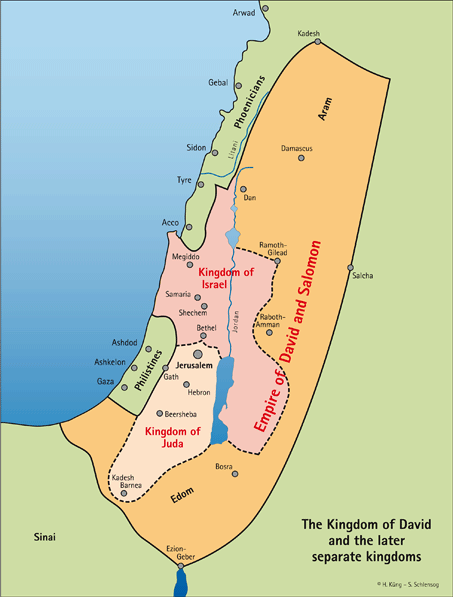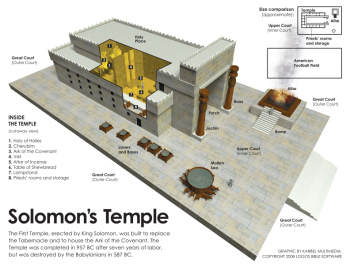The first Israel state-building period is the Period of judges (Sefer) – from entering into the Promised Land, to the election of the first ruler king Saul. The judges were carriers of secular and religious authorities. Institution of Judges was later present in Carthage, which was governed by two judges. However, the pressure of the Philistines cities required a more organized action, and it had a very important role in the creation of the monarchy. The choice at that time was on Saul (1027 – 1005 BC), member of the Benjamin tribe, to solve this problem.
The information about him originated solely from the Old Testament. The credibility of this information is in dispute, but it gives us at least a sketch of the earliest monarchy history. The biblical view of Saul is negative, and it seems that he should be seen as a brave and skilled military commander, which achieved certain successes against the enemies of the Israelites. Even though, he failed to transform Israel into a centralized state. In addition, he totally failed to cope with the Philistines, and during one conflict, Saul was killed. His successor was his son Ishbal. David will be accepted as the king after the death of Ishbal.



David (1005 – 970 BC) was the first ruler of a unified Israel. David, Judea from Bethlehem, was probably one of the commanders in Saul’s army. According to Old Testimony tradition, he at one point protested against Saul, and he fled to the mountainous in the region of Judea and he gathered there all those who were dissatisfied with the royal authority. He strengthened his army by recruiting Philistines mercenaries. He imposed himself to the Lords of Judea, which as a result he was anointed as a king of Judea after the death of Saul and his three sons in the battle of Gilboa. In Israel, the king was elected after the death of Saul son Ishbaal (Ish-bosheth), who died as a victim of conspiracy. This led to the unification of Israel and Judea.
According Old Testament, his military efforts were successful, and he was able to impose its authority to all tribes, which Saul did not succeed. Tradition attributes to him conquering of Jerusalem. The city became the capital of the united empire primarily because of its favorable position – it was located on the border between Judah and Israel. The Old Testament tells that David in Jerusalem raised a sanctuary, which was dedicated to Yahweh, so the city soon became the religious center of the united country.
According to tradition, David defeated the Philistines, which had retreated to the mainland. He conquered countries east of the Jordan – Edom, Moab, Ammon, as well as Aramaic kingdom Zobah. However, the real power he had only over Judah and Israel.
Solomon (970-930 BC) succeeded David. Solomon has consolidated and improved the country that his predecessor created. According to the Old Testament, Solomon reorganized the central administration and divided the country into 12 tax districts. He took heavy architectural ventures: he established Hazor, Megiddo, and Gezer, which is confirmed by archaeological excavations. Solomon also erected fortifications in the Negev, in order to defend the southern border. However, Solomons most famous project is related to Jerusalem. He raised a temple dedicated to Yahweh.



Foreign Policy: Solomon had good relations with Egypt, and he made an alliance with Ahiram I, king of Tyre. The Old Testament says that Ahiram provided craftsmen and timber to build the temple. Thanks to the Phoenicians, Israel Fleet was built, which participated in a joint trade mission directed to Ophir. Tyre in return freely used trade routes, half of the profit from joint commercial ventures and 20 colonies that were in a rich agricultural area. For financing the construction ventures and luxurious life, Solomon, according to Old Testament, was taking taxes from the people that David had conquered. He also taxed the commercial traffic that was conducting in the territories under which was under his control.
Solomon was also involved in mediating trade: horses from Cilicia and chariot from Egypt were sold at markets in Israel. However, goods that came into the country treasury, obviously was not enough to satisfy all the needs of ruler, so he imposed additional taxes on the local population, and introduced a system of work duties.
All this has led to discontent of the population, especially among the northern tribes. The Old Testament tells about disagreement with Solomon’s religious policy, which is primarily related to his wives – foreigners, which in the harem respected its own gods. Nevertheless, Solomon remained on the throne for the rest of his life. However, soon after his death, the monarchy ceases to exist.
